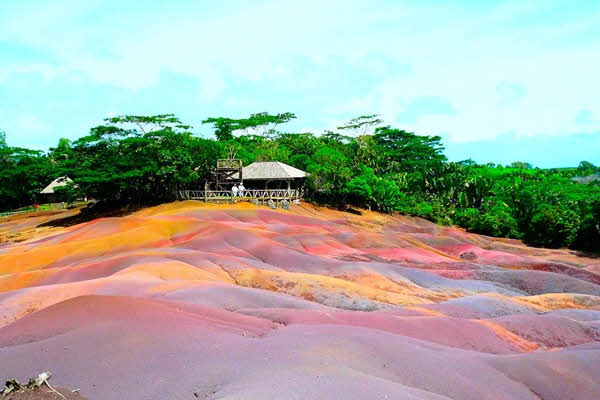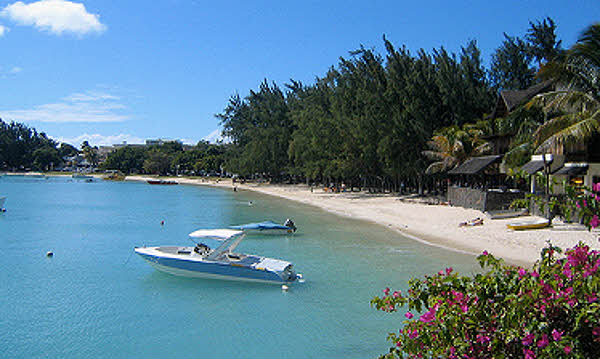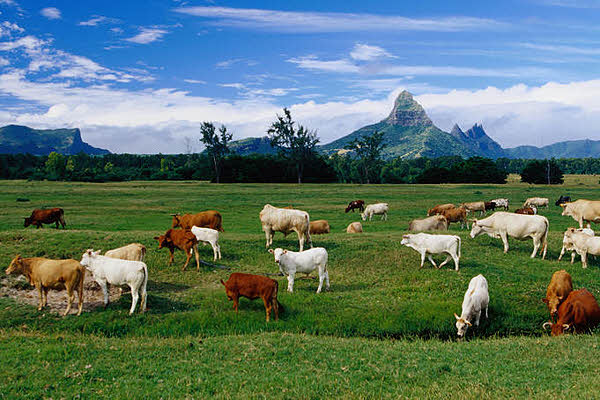Tourism

Seven Colored Earths at Chamarel
Mauritius is one of the world’s top luxury tourism destinations. It possesses a wide range of natural and man-made attractions, enjoys a tropical climate with clear warm seawaters, attractive beaches, tropical fauna and flora complemented by a multi-ethnic and cultural population that is friendly and welcoming. These tourism assets are its main strength, especially since well-designed and run hotels, and reliable and operational services and infrastructures back them up. Mauritius received the World Leading Island Destination award for the third time and World’s Best Beach at the World Travel Awards in January 2012. Mauritius has also one of the highest rates of returning tourism visitors in the world.

Le Morne Landscape
Le Morne Cultural Landscape: Monument of Nature and UNESCO world heritage site. Located on the South Western tip of Mauritius, Le Morne Mountain symbolizes slaves’ struggle for freedom.
Mauritius will enchant you; will uplift your soul, making you feel that you belong to the chosen few. Every visitor enjoys personal attention. Every encounter is an opportunity to discover a friendly face. Behind each smile lies the promise of a unique holiday. The contrast of a multitude of colours and tastes, the island, set in its turquoise sea, is an oasis of peace and tranquility. Mauritius, a melting pot where past and present are smoothly blended together, offers an essential beauty that will compel to return to its shores time and time again. May your stay with us remain engraved in your memory forever?
Cities and tourist hubs
- Blue-Bay
- Port Louis — capital of Mauritius
- Grand Bay
- Flic en Flac
- Chamarel
- Mahebourg
- Beau Bassin
- Curepipe
- Rose Hill
- Quatre Bornes
- Vacoas
- Phoenix
Beaches

Lagoons of a typically tropical sweetness and endless white beaches : Mauritius is a real paradise for those who want to enjoy the sea or just to soak up the sun. Here is a list of the island’s finest public beaches.
Grand Bay – One of the best areas for sailing, windsurfing and water skiing. La Cuvette beach has been recently upgraded.
Pereybere – This remarkable small cove half-way between Grand Bay and Cap Malheureux is one of the finest bathing spots on the island.
Belle Mare – Miles and miles of white and spotless beaches from Belle Mare to Trou-d’Eau Douce
Blue Bay – Blue Bay beach is one of the most popular bathing spots in the Southeast of the island. An ideal spot for windsurfing and sailing
Le Morne & Tamarin – Offer kilometers of beaches for bathing and are very popular for surfing.
Flic en Flac – White beaches fringed with filaos or Casuarina trees.
Cuisine
Mauritius is a paradise for the senses, not only for the eyes with its beautiful landscape, but also for the palate. Gastronomes will find a variety of flavors and aromas inherited from the different migrations through its history. Culinary traditions from France, India, China and Africa, the best-known and appreciated cuisines in the world, have been passed on through generations.
Depending on the region, rice or a variety of flat bread called chapattis or roti, called farata (paratha) by the local people, is eaten with curries. The extensive use of spices like saffron, cinnamon, cardamom, and cloves and herbs like thyme, basil, and curry leaves are the common ingredients that provide some powerful, yet subtle, savor. Dal, a variety of lentil soup, is many and varied according to which type of lentil is used; vegetables, beans, and pickles accompany the dishes. Dholl puri and roti, originally an Indian delicacy have become the fish and chips of Mauritians.
Biryani from Mughal origins is a dish expertly prepared by the Muslim community, with meat mixed with spiced rice and potatoes.
You can buy many snacks on the streets of Mauritius including the famous gateaux piments (a variant of the Indian vadai; literally, chilli cakes), and vegetable or meat samosas (puffs), along with octopus curry in bread. The tomato and onion based dish called Rougaille (pronounced rooh-guy) is a variation of the French ragoût. The dish usually consists of meat or seafood (corned beef and salted snoek fish rougaille are very popular with the locals) and all Mauritians eat this dish often if not daily.
Mauritians have a sweet tooth and make many types of ‘gateaux’, as they are called. The cakes vary and you can find cakes very much like those in France and others similar to Indian sweets like Gulab Jamun and Rasgulla among many others.

Surreal rural landscape, Mauritius
